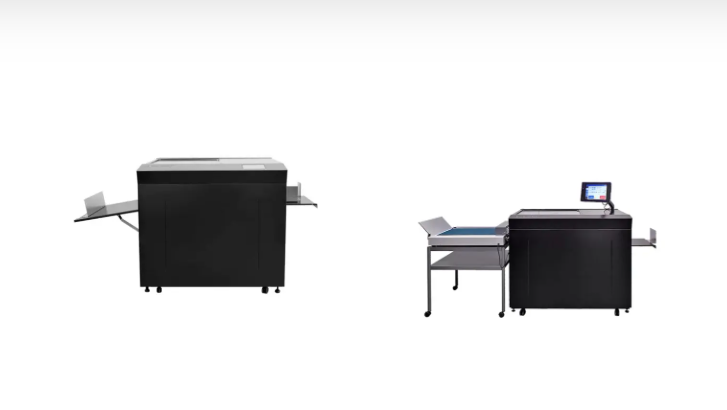In the world of crafting, packaging, manufacturing, and printing, die cutters have become essential tools. Whether you’re a DIY enthusiast making greeting cards at home or a professional in an industrial setting creating product packaging, die cutting machines can save time and deliver precise, consistent results.
What Is a Die Cutter?
A die cutter is a machine used to cut materials into specific shapes using a die — a sharp, custom-shaped blade or template. The machine applies pressure to the die, pushing it through the material to create clean and accurate cuts. These machines are used for everything from cutting paper, vinyl, and fabric to thicker materials like leather, foam, and even metal.
How Does Die Cutting Work?
The basic die cutting process involves:
- Inserting a die into the machine (this could be manual or digital).
- Placing the material to be cut on top of or beneath the die.
- Running the die and material through the machine, applying pressure to make the cut.
Depending on the type of die cutter, the machine may use manual cranking, electronic controls, or digital software to perform the cuts.
Types of Die Cutters
There are several types of die cutting machines available, each serving different purposes:
1. Manual Die Cutters
These use a crank handle to roll the material and die through the machine, cutting it under pressure.
- Best for: Hobbyists and small projects.
- Pros: No electricity needed, simple to use, portable.
- Cons: Limited to physical dies, less versatile.
2. Electronic Die Cutters
These plug into a power source and often use digital files to control the die-cutting process.
- Best for: Crafters, small businesses, and educational settings.
- Pros: More precise, compatible with design software, easy replication.
- Cons: Costlier than manual, requires electricity.
3. Digital Die Cutters (Plotter Cutters)
These advanced machines are controlled by computer software and use a blade or laser to cut materials without physical dies.
- Best for: Commercial and professional use.
- Pros: High precision, customizable designs, scalable production.
- Cons: Higher upfront cost, learning curve with software.
4. Industrial Die Cutters
Used in manufacturing, these machines can handle large volumes and thicker materials like foam board, corrugated cardboard, or plastics.
- Best for: High-volume packaging, automotive parts, signage.
- Pros: Durable, fast, handles a variety of materials.
- Cons: Expensive, large footprint, requires maintenance.
Common Uses of Die Cutters
Die cutters are extremely versatile and used in many industries:
- Arts & Crafts: Scrapbooking, card making, stencils, decals
- Packaging: Creating custom boxes, inserts, labels
- Education: Classroom decorations, student projects
- Fashion & Textiles: Cutting fabric patterns or appliques
- Sign Making: Vinyl lettering, banners
- Automotive: Foam and gasket cutting
Materials You Can Cut with a Die Cutter
Depending on the machine and die used, die cutters can process:
- Paper and cardstock
- Vinyl and adhesive film
- Leather
- Felt and fabric
- Thin metal sheets
- Foam and rubber
- Plastic and laminates
Always check your machine’s specifications before attempting to cut thicker or unconventional materials.
Choosing the Right Die Cutter
When selecting a die cutter, consider the following:
1. Purpose
Are you using it for hobbies, business, or manufacturing? Manual die cutters are good for casual use, while digital and industrial ones are suited for more intensive work.
2. Material Compatibility
Make sure the machine supports the types of material you intend to cut, especially if working with textiles, vinyl, or metals.
3. Software Compatibility
If going digital, check whether the machine works with design software like Adobe Illustrator, CorelDRAW, or its own proprietary app.
4. Size and Portability
Manual cutters are compact and portable. Digital machines vary in size, and industrial die cutters usually require dedicated space.
5. Price
Entry-level machines may start around $100, while professional digital cutters can cost over $1,000. Industrial models can reach tens of thousands.
Popular Die Cutting Brands
Some well-known die cutter brands include:
- Cricut – Ideal for home crafters and small businesses.
- Silhouette – Offers powerful software and versatile machines.
- Brother ScanNCut – Comes with built-in scanning and cutting capabilities.
- Sizzix – Known for manual die cutting machines and dies.
- AccuCut – Popular in educational and professional settings.
Maintenance Tips
To keep your die cutter in top condition:
- Regularly clean the cutting plates and dies.
- Avoid cutting materials thicker than recommended.
- Store dies properly to prevent dulling or bending.
- Update firmware and software regularly (for digital cutters).
Final Thoughts
Die cutters are valuable tools that bring precision and creativity to a wide range of projects. From handmade greeting cards to industrial packaging, the possibilities are endless when you have the right machine and materials. Whether you’re just starting out or scaling up production, understanding how die cutters work and what options are available can help you make an informed choice.








